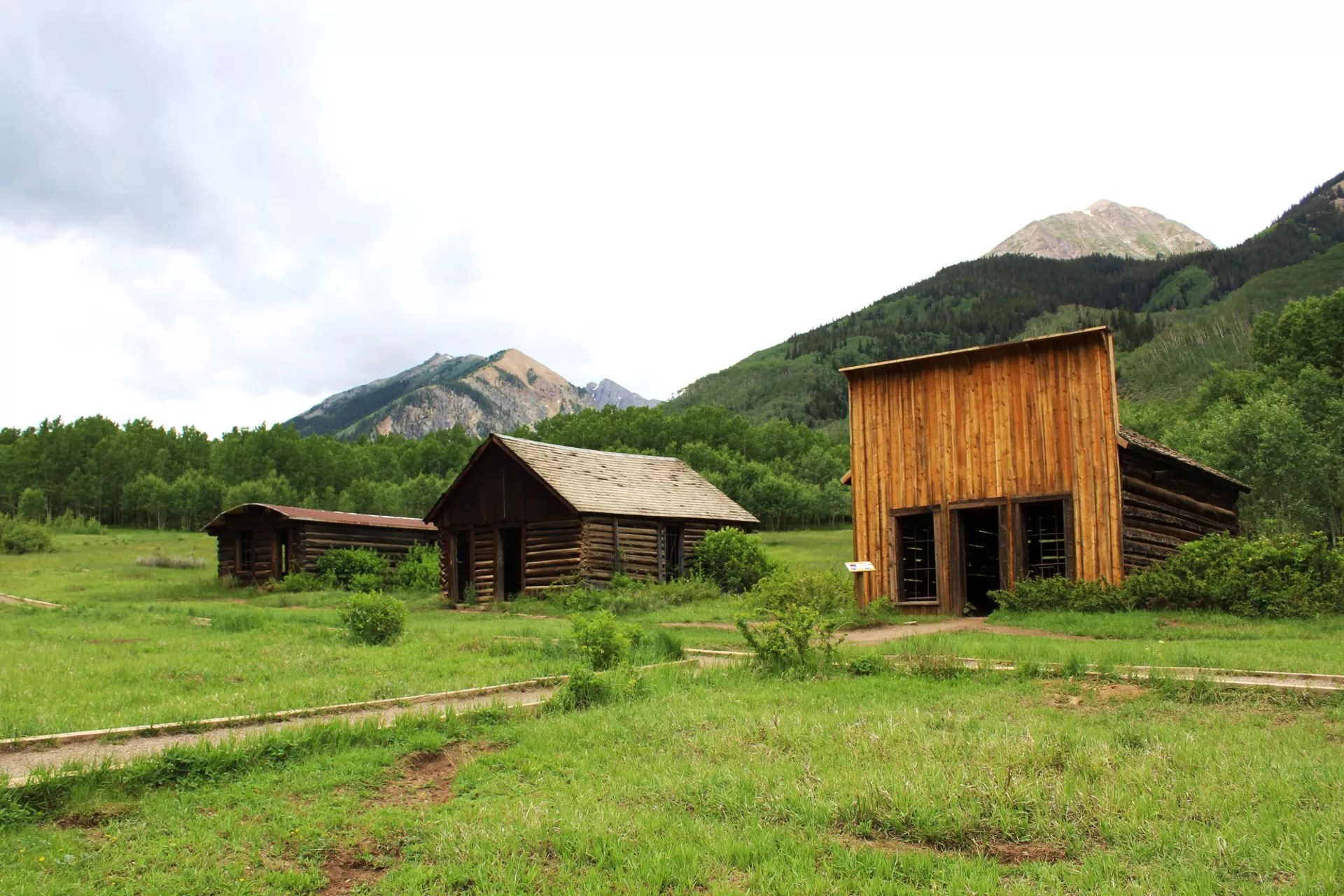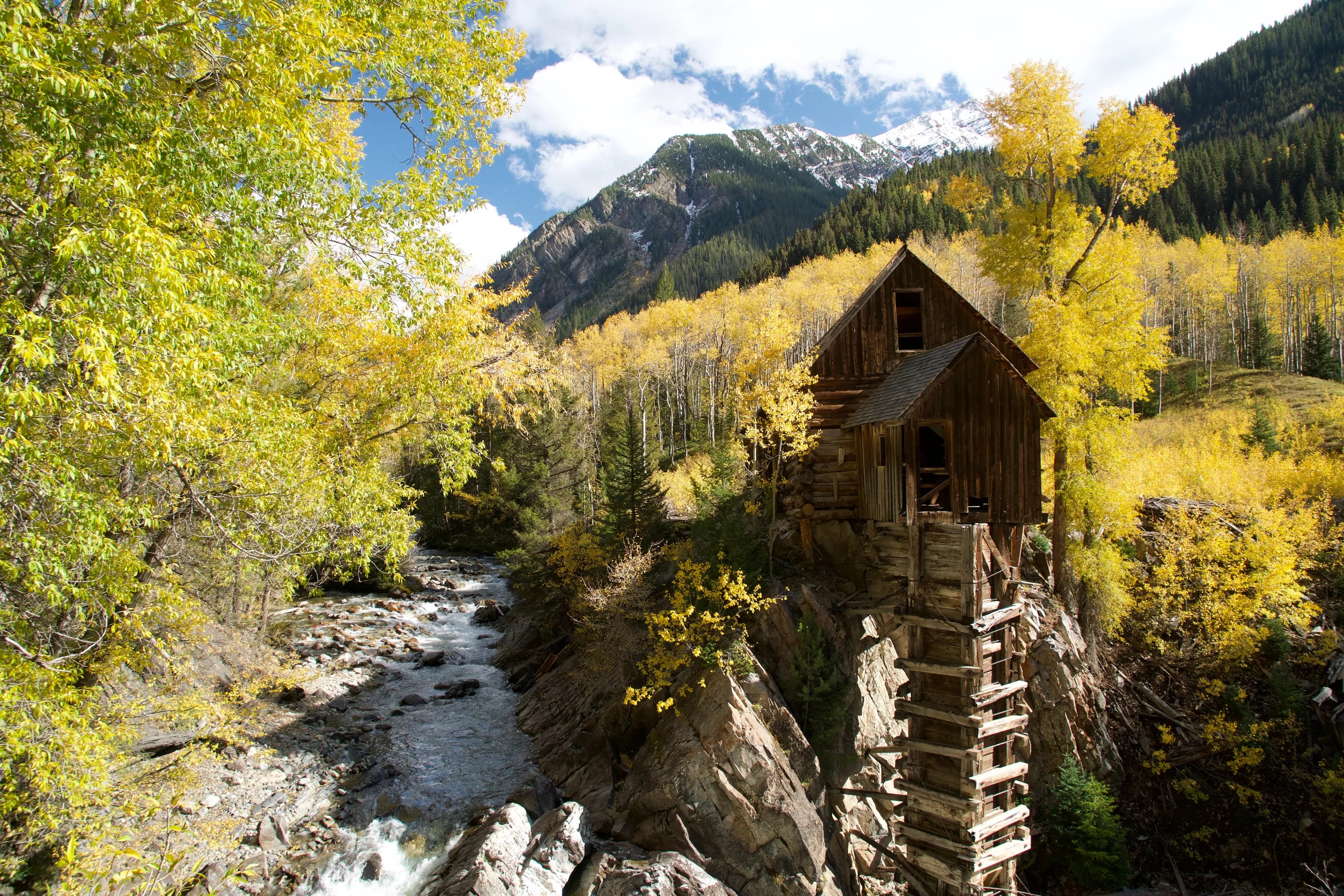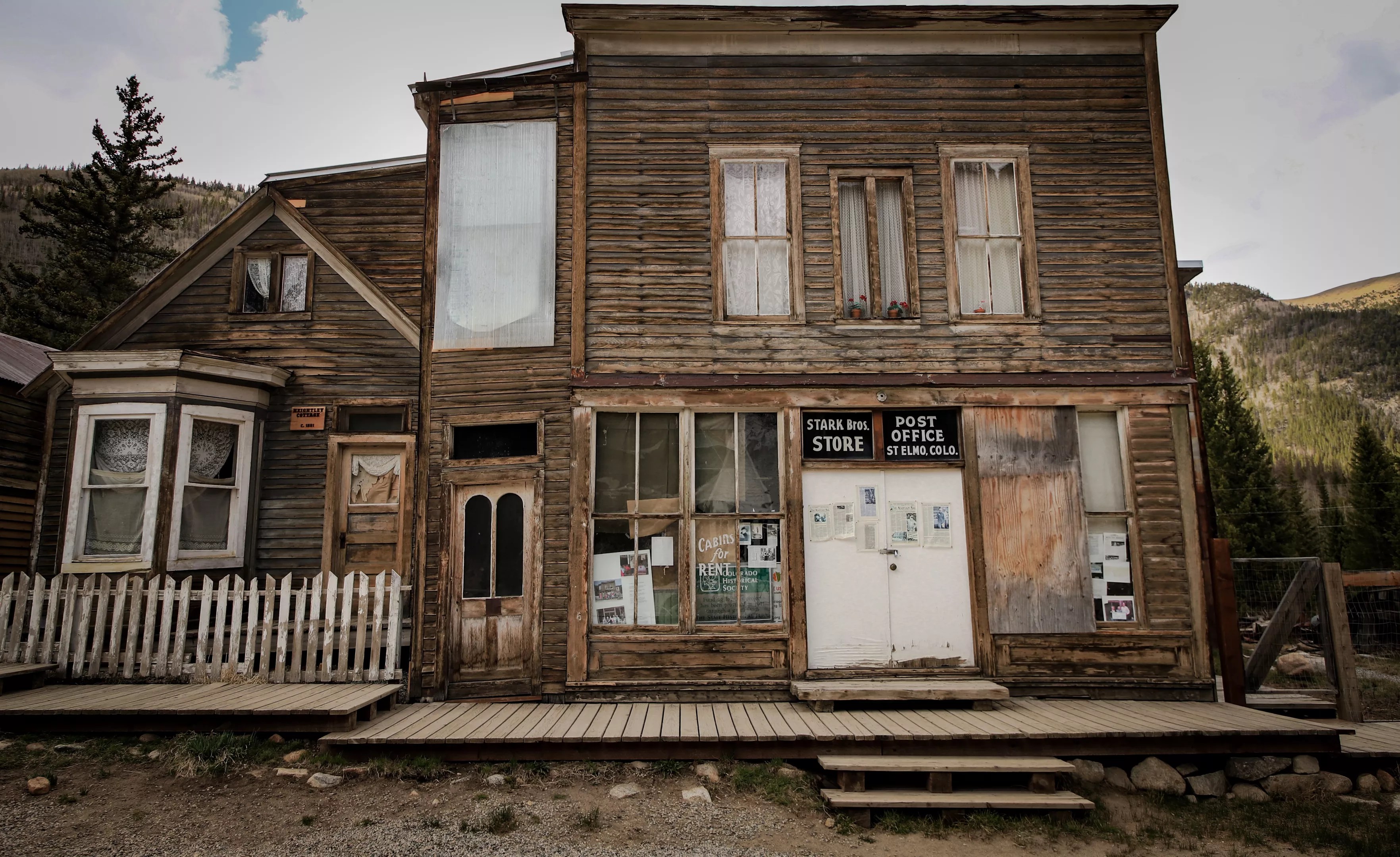
Abigail Bliss

Audio By Carbonatix
As we creep closer to Halloween, Colorado’s most haunted places see a spike in interest. You can read about them in Ghosts, Legends, and Lore of the Rockies, but to see some of these sites firsthand will surely send a shiver down your spine. This spooky season, get outside and explore these ten Colorado ghost towns:
Ashcroft
Formerly known as Castle Forks City, Ashcroft was founded in 1880 by a group of silver-searching prospectors. They built a courthouse and laid streets in two weeks’ time, and by 1883, the town established a school, hotel and twenty raucous saloons. But when the shallow silver deposits ran dry in 1885, residents picked up their log cabins and moved to nearby Aspen. Still, several large structures remain in the ghost town, which visitors can tour for $5 cash.
Animas Forks
Back in 1873, bold prospectors built a mining camp at 11,200 feet above sea level, with 450 residents occupying the cabins and frequenting the post office, general store and saloon. The following year, a 23-day blizzard hit. Seasonal storms and a series of busts caused the Animas Forks population to dwindle, and it deteriorated into a ghost town by the 1920s. Today you can explore the remaining structures via bumpy backcountry roads. If you don’t have a 4×4 vehicle, check out Mild2Wild, an area outfitter that hosts Jeep excursions and whitewater rafting tours.
Carson
The story of Carson is very similar to that of Animas Forks. Set at 11,600 feet, the high-elevation environment brought about harsh winters, driving away even the hardiest of miners. Transportation of silver and gold was also incredibly difficult because of Carson’s remote location. Hidden away in the mountains, it’s a lesser-visited ghost town, with remains of seven structures. To get there, hike seven miles or take a 4×4 vehicle up the old wagon road.
This year, make your gift count –
Invest in local news that matters.
Our work is funded by readers like you who make voluntary gifts because they value our work and want to see it continue. Make a contribution today to help us reach our $50,000 goal!

Crystal Mill, a well-preserved structure near Marble.
Unsplash / Michael Robillard
Crystal
Though far from any major cities, this popular destination draws crowds for its key attraction: the Crystal Mill. It’s one of the most amazing abandoned places in Colorado and is highly frequented by photographers. The mill is located on private property, and a $10 cash fee is required, though some shutterbugs pay up to $200 for a closer vantage point. Whether or not you’re carrying lenses and tripods, driving via 4×4 vehicle is most recommended. Jeep tours are available, but if you don’t mind the traffic, you can hike the nine-mile trail as well.
Vicksburg
In the early 1860s, when some curious burros wandered down into Clear Creek Canyon, a group of miners discovered gold. By 1867, Vicksburg’s general store, blacksmith, schoolhouse and saloons garnered the town a population of 700. Settlers planted Balm of Gilead trees on either side of the main street, which stand much larger today. Well-preserved log cabins and buildings remain upright, too, and some are even seasonally occupied. When visiting, stop in the Chaffee County Historical Society museum and see Winfield, another nearby ghost town.
Dearfield
Inspired by Booker T. Washington, Boulder entrepreneur Oliver Toussaint Jackson founded Dearfield in 1910. It was one of fourteen all-Black settlements established in the American West, and is Colorado’s only remaining site. Sixty families once resided in this agricultural area spanning 15,000 acres between Greeley and Fort Morgan. However, the Great Depression and Dust Bowl later caused Dearfield to become a ghost town. Today visitors can view remaining structures that the Black American West Museum is working to restore.
Alta
Unlike many ghost towns in Colorado, Alta held a lengthy success. From 1877 to 1948, the Gold King area was highly prolific, but once the mill burned out, mining ceased and residents abandoned today’s ghost town. Remaining structures include several cabins and the mining manager’s two-story home, all backdropped by the beautiful San Juan Mountains. With an all-wheel drive vehicle or ten-mile hike, Alta is accessible from June to late fall.

Lace veils the windows of abandoned homes in St. Elmo.
Unsplash / Clint McKoy
St. Elmo
A well-preserved ghost town, St. Elmo captures the spirit of the Wild West and takes visitors back in time. During its boom era in the early 1880s, roughly 2,000 miners filled the cabins and parlors. Today the dusty main street is lined with buildings, now abandoned and weatherbeaten. In total, forty structures still stand, with St. Elmo Town Hall & Jail and the old general store being main attractions. Highly accessible from Buena Vista, it’s a popular area with two other ghost towns, Tin Cup and Hancock, nearby.
Russell Gulch
In the summer of 1859, gold was struck in Russell Gulch, and that same year, 900 prospectors followed. By 1860, the population soared to 2,500. But like others on this list, when the mining industry tanked, so did the town. By 1930, 75 residents remained, and now, only the skeletons of their log and brick structures. From Central City, Russell Gulch is easy to reach by car or via a separate ATV route on Oh My God Road. Either way, when you visit, don’t miss a spirited game at Ghost Town Disc Golf.
Independence
Independence Pass is one of the best drives to see Colorado’s fall colors, and the ghost town of Independence makes for a great rest stop. Make the trip soon, as the pass is set to close in early November because of upcoming snow. But in 1879, winter didn’t stop miners from settling – at least, not at first. Though Independence once had ninety buildings and flourished with gold worth hundreds of thousands, the mining bust and 1899 blizzard left residents stripping walls to create skis and escape. See what’s left on a self-guided tour, accessible with a $5 donation.